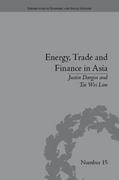Questions for Review: 1,2,3,4,6,7,9 and 13 Page 287
Title: MICROECONOMICS11th Edition
ISBN: 9871305505537 987
Author: William A McEachern
Summary 1. The labor demand curve shows the relationship between the (c) risk differences, both in terms of the workers' safety and the wage and the quantity of labor that employers are willing and chances of getting laid off; (d) geographic differences; (e) racial able to hire, other things constant. The labor supply curve and gender discrimination; and (f) union membership. shows the relationship between the wage and the quantity of labor that workers are willing and able to supply, other 6. Labor unions and employers try to negotiate a labor contract things constant. The intersection of labor demand and labor through collective bargaining. A major source of union power supply determines the market wage and market employment. has been the threat of a strike, which is an attempt to withhold labor from the employer. 2. People allocate their time to maximize utility. There are three uses of time: market work, nonmarket work, and leisure. A per- 7. Inclusive, or industrial, unions attempt to establish a wage son attempts to maximize utility by allocating time so that the floor that exceeds the competitive, or market-clearing, wage. A expected marginal utility of the last unit of time spent in each union wage above the market-clearing level creates an excess activity is identical. quantity of labor supplied, so the union must somehow ration the limited jobs available among its members. Exclusive, or 3. The higher the wage, other things constant, the more goods and craft, unions try to raise union wages by restricting the supply services can be purchased with that wage, so a higher wage en- of labor. Another way to raise union wages is to increase the courages people to substitute market work for other uses of their demand for union labor. time. But a higher wage also increases income for a given amount of work, increasing the demand for all normal goods, including 8. Union membership as a percentage of the labor force has leisure. The net effect of a higher wage on the quantity of labor sup- been falling for six decades. Reasons for the decline include plied depends on both the substitution effect and the income effect. right-to-work laws, growing global competition, a shift in em- ployment from goods to services, a greater willingness to hire 4. The supply of labor depends on factors other than the wage, replacements for striking workers, a greater willingness of including (a) other sources of income, (b) job amenities, (c) the union members and others to work during strikes, failure to future value of job experience, and (d) worker tastes. unionize high-tech firms, failure to adopt labor-saving capital, 5. Market wages differ because of (a) differences in training and and the general improvements in pay, benefits, and conditions education; (b) differences in the skill and ability of workers; for all workers, not just unionized workers.12-5 Conclusion The rst half of this chapter focused on labor supply and explained why wages dif- fer across occupations and among individuals within an occupation. The interaction of labor demand and supply determines wages and employment. The second half of the chapter explored the effect of unions on the labor market. At one time, unions dominated some key industries. But as global competition intensifies, employers have a harder time passing higher union labor costs along to consumers. Both in the United States and in other industrial economies.| union members represent a dwin- dling segment of the labor force. blow only 6.6 percent of private-sector workers in the United States are union members. Half of all union members in the United States are government workers. 1. Uses of Time Describe the three possible uses of an individu- al's time, and give an example of each. . Work and utility Explain the concept of the 'net utility of work.I How is it useful in developing the labor supply curve? . Utility Maxlmlaatlon How does a rational consumer allocate time among competing uses? . Substitution and lnoorne Effects Suppose that the substim- lion effect of an increase in the wage rate exactly offsets the income effect as the hourly wage increases from $12 to 513. What would the supply of labor curve loolt like over this range of wages? Why? 5. Substitution and Income Effects Suppose that the cost of living increases, thereby reducing the purchasing power of your income. if your money wage doesn't increase. you may work more hours because of this cost-of-ltving increase. Is this response predominantly an income effect or a substitution effect? Explain. 6. Nonwage Determinants of Labor Supply Suppose that mo iohs are exactly the same except that one is performed in an air-conditioned workplace. How could you measure the value workers attach to such a job amenity? 7. Why Wages Differ Why might permanent wage differences occur between different markets for labor or within the same labor market? 8. Case Study: Winner-Take-All Labor Markets What characterizes 11. Industrial Unions Why are unions more effective at raising a winner-take-all labor market? Offer some reasons why wages in oligopolistic industries than in competitive industries? corporate heads now earn relatively more than they did in 1980. 12. Craft Unions Both industrial unions and craft unions 9. Mediation and Arbitration Distinguish between mediation attempt to raise their members' wages, but each goes about it and binding arbitration. Under what circumstances do firms differently. Explain the difference in approaches and describe and unions use these tools? What is the role of a strike in the the impact these differences have on excess quantity of labor bargaining process? supplied. 10. The Strike Why might firms in industries with high fixed costs 13. Increasing Demand for Union Labor Identify four ways that be inclined to prevent strikes or end strikes quickly? unions try to increase the demand for unionized workers










